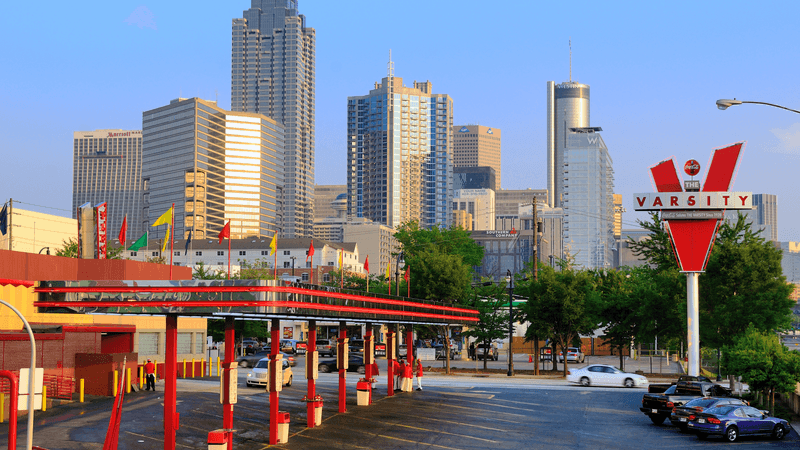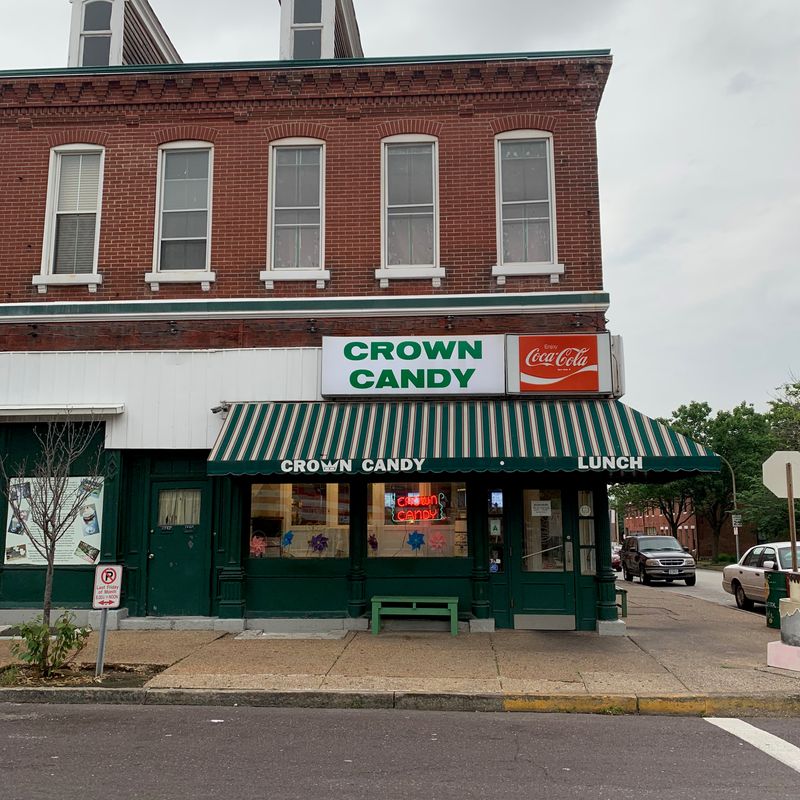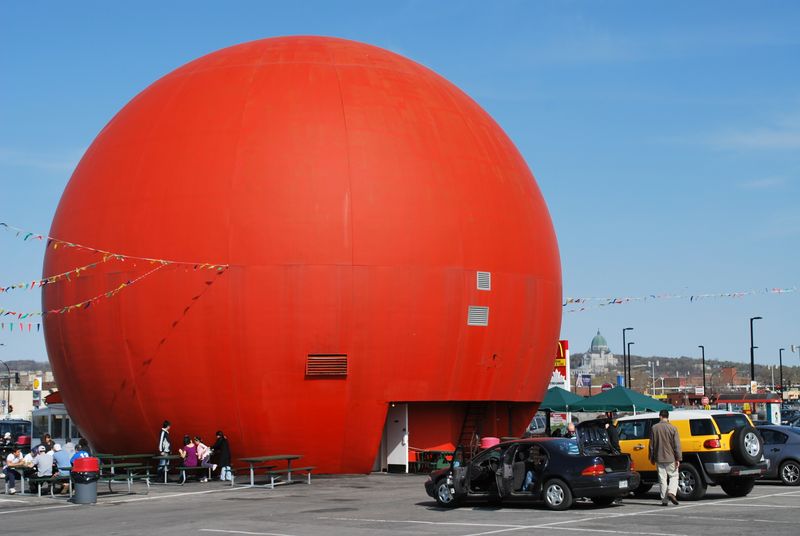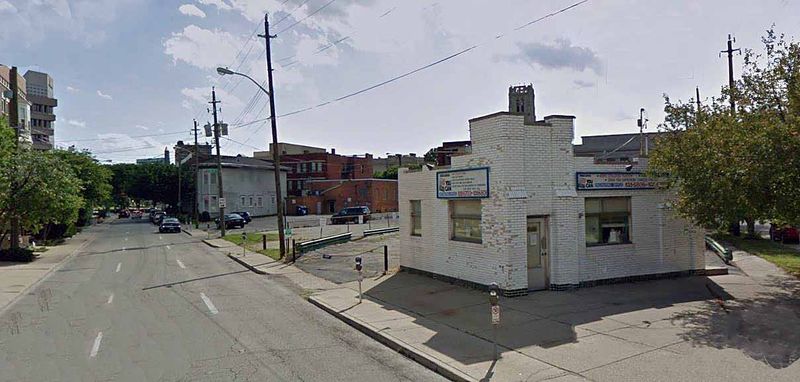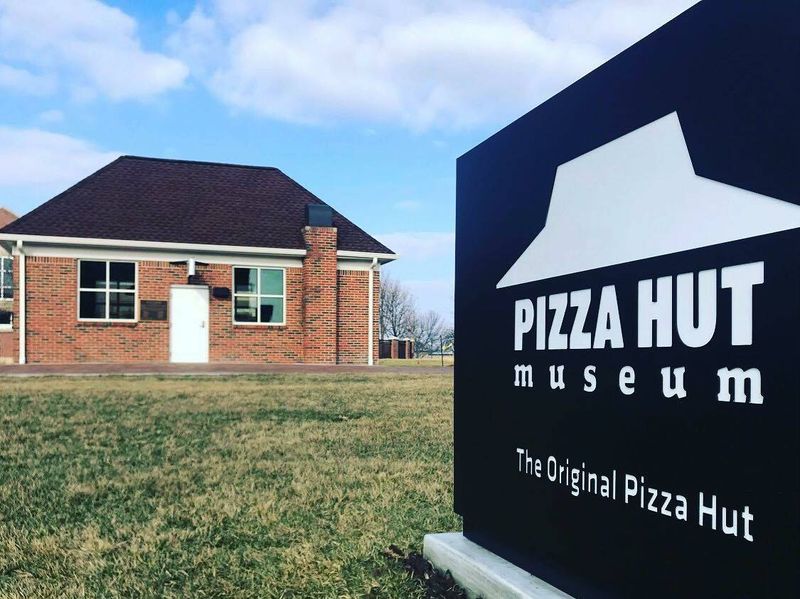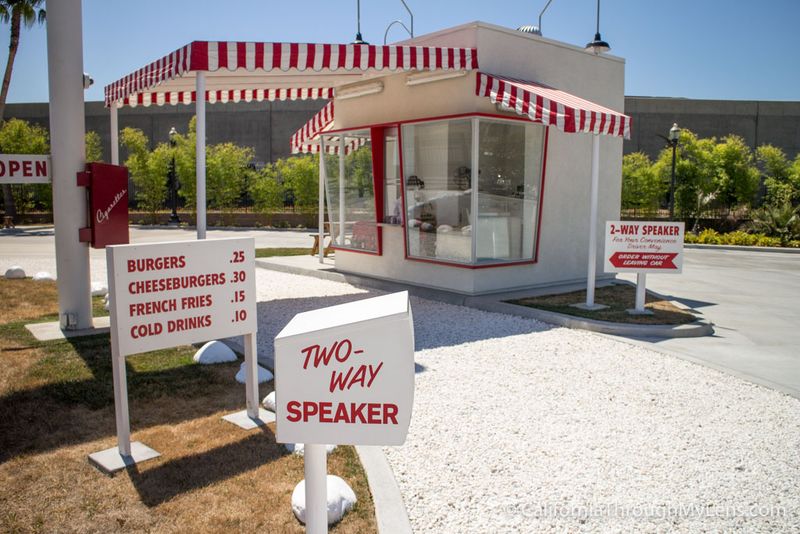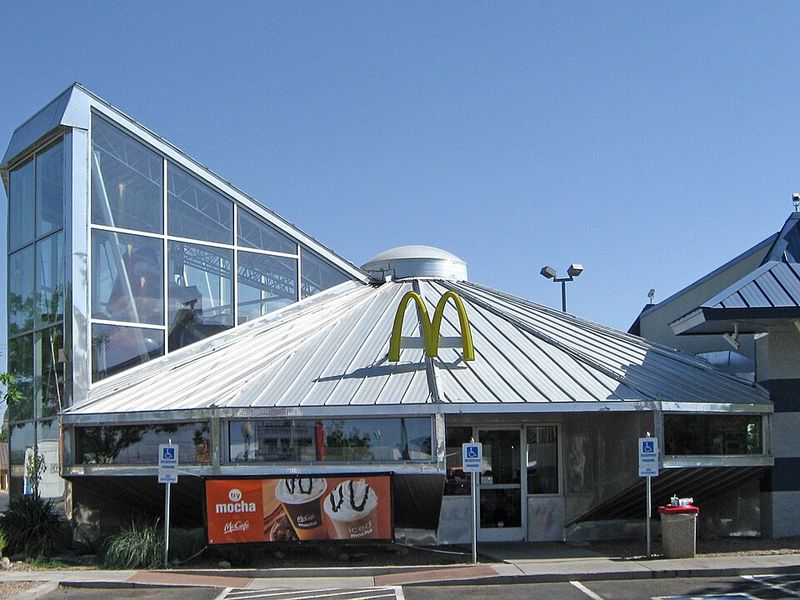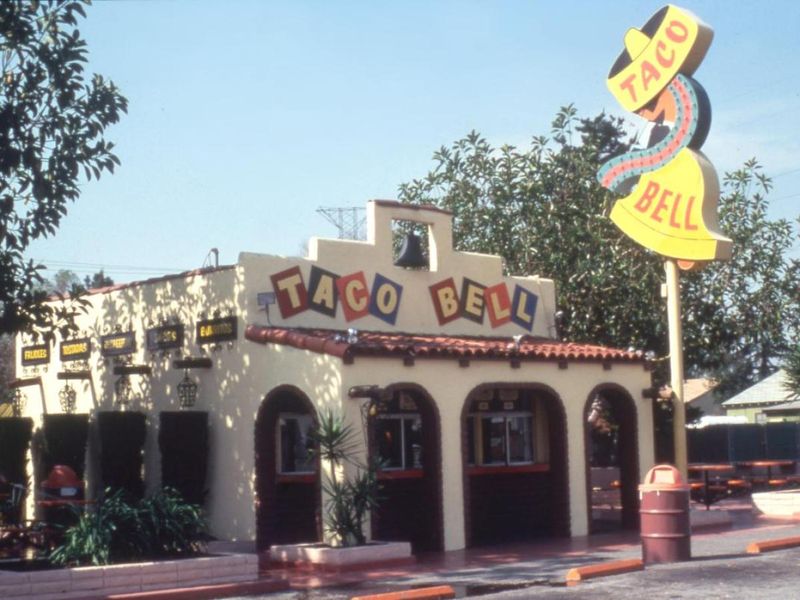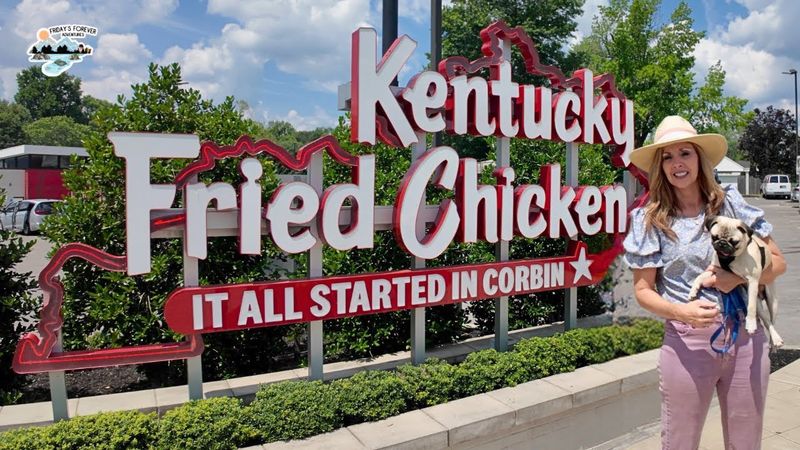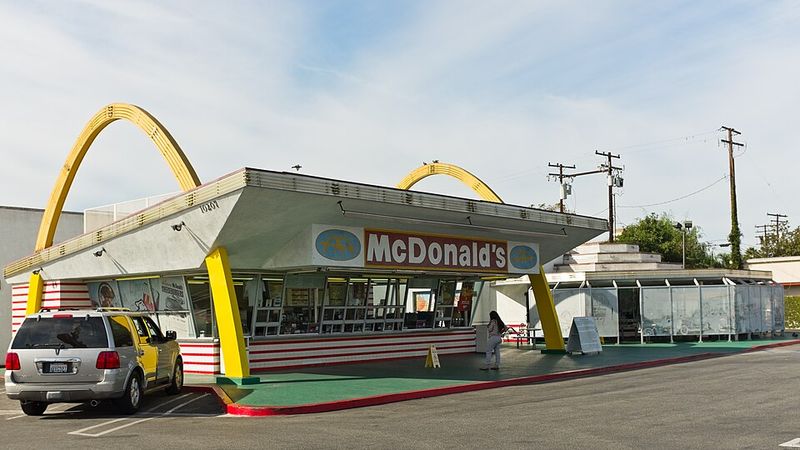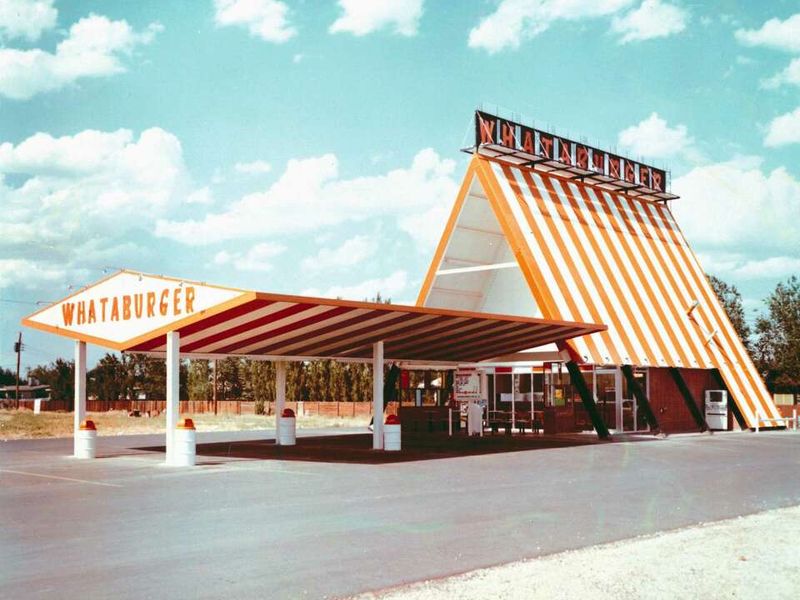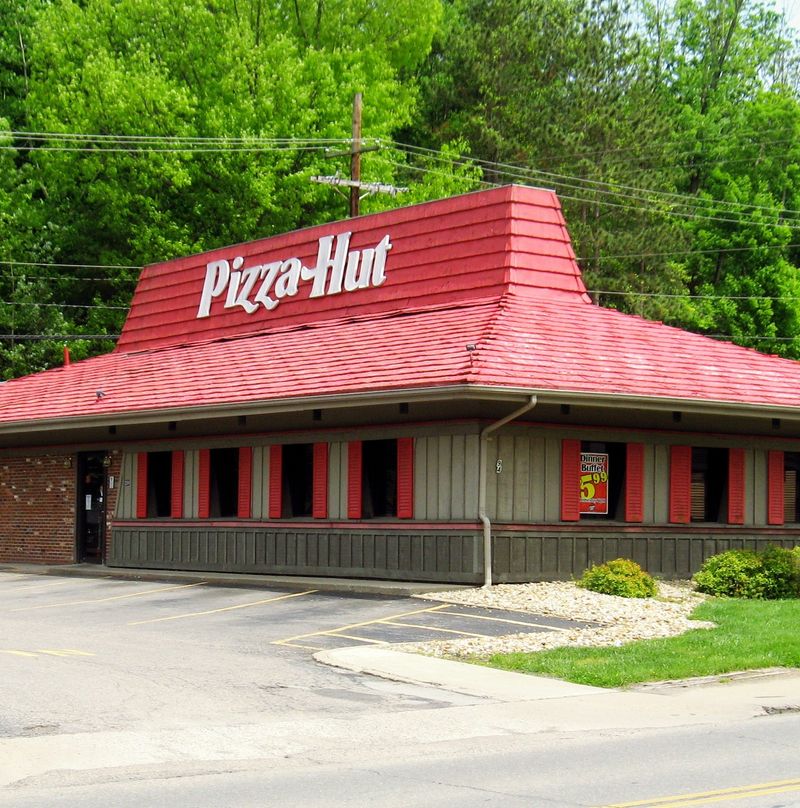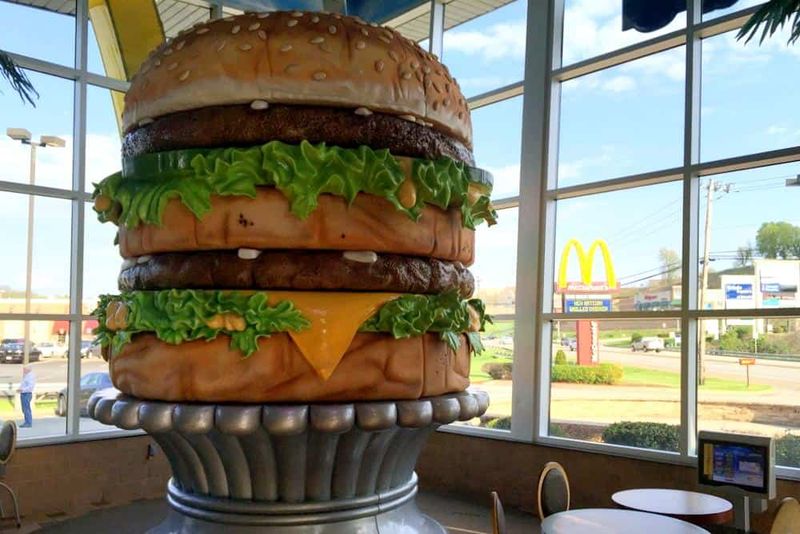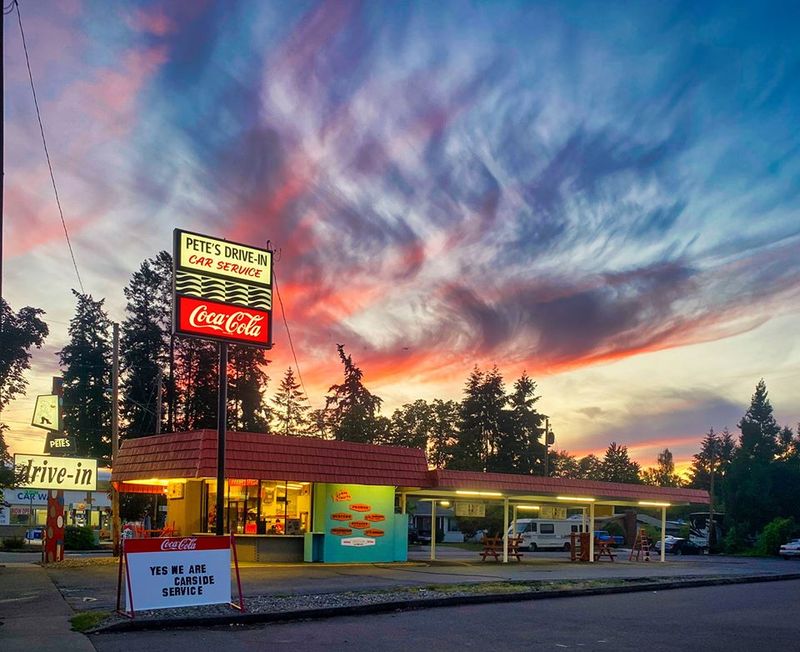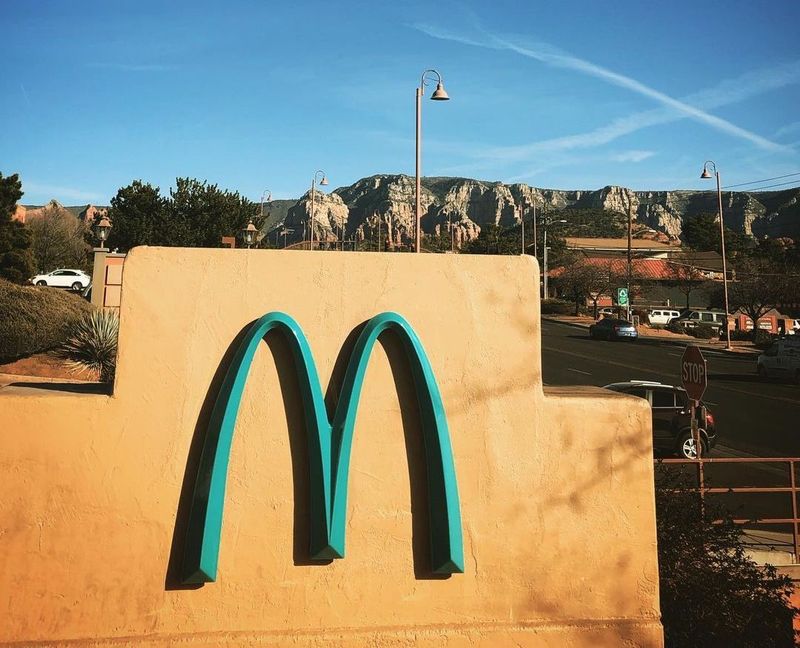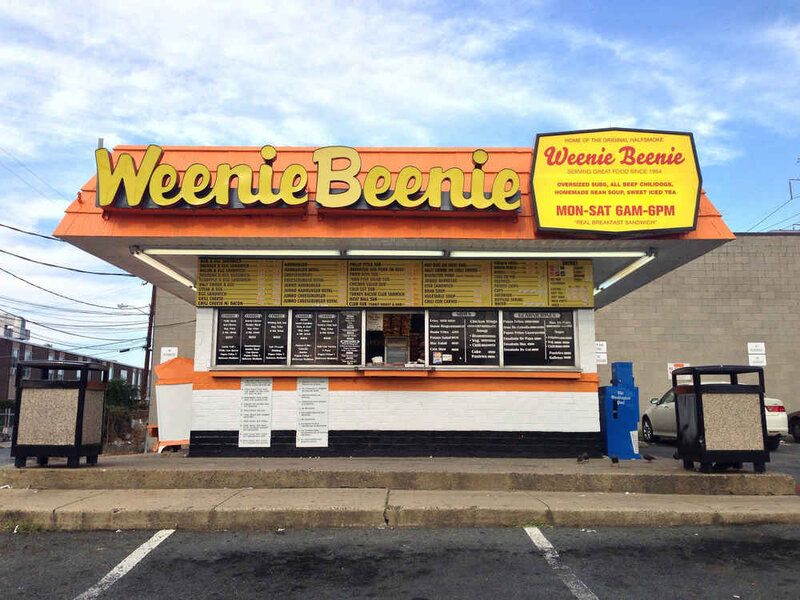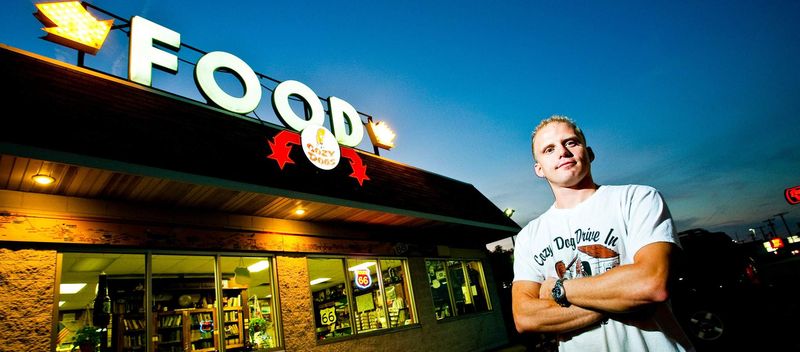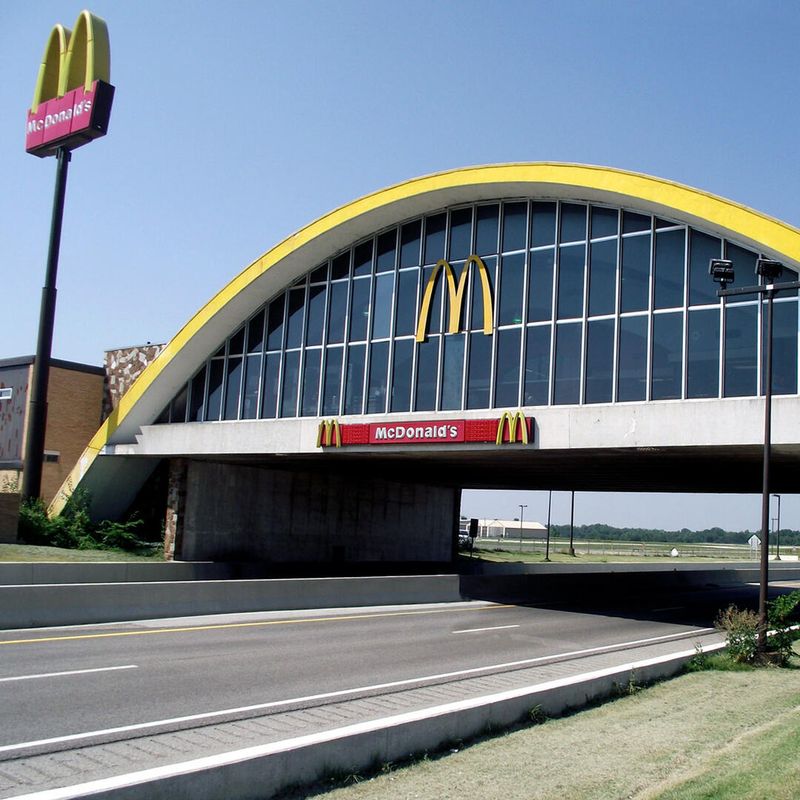Fast food is not just about grabbing a quick burger or fries anymore. Across North America, certain restaurants have become legendary landmarks, drawing visitors from around the world who want to experience a piece of culinary history. From giant orange-shaped buildings to museums celebrating the birth of famous chains, these spots offer more than just meals; they offer memories and stories worth sharing.
1. The Varsity (Atlanta, Georgia)
Founded back in 1928, this massive eatery holds the title of the world’s largest drive-in restaurant. Spanning two entire city blocks in downtown Atlanta, it serves thousands of hungry customers daily with lightning-fast service.
Famous for its chili dogs and frosted orange drinks, the menu features classic American fast food prepared the old-fashioned way. The staff’s unique lingo adds charm to every order, making dining here an unforgettable cultural experience.
Visitors love the nostalgic atmosphere and the chance to step back in time while enjoying delicious comfort food that has satisfied generations of Georgians and tourists alike.
2. Crown Candy Kitchen (St. Louis, Missouri)
Operating continuously since 1913, this charming soda fountain and fast-food spot represents over a century of American dining tradition. As one of the oldest establishments of its kind in the United States, it has become a beloved St. Louis treasure.
The menu features handmade chocolates, enormous ice cream sundaes, and classic sandwiches that keep locals coming back generation after generation. Every detail, from the vintage counter to the family recipes, preserves authentic early 20th-century charm.
Walking through the door feels like traveling through time, offering a genuine taste of how Americans enjoyed sweet treats and simple meals long before modern fast-food chains existed.
3. Gibeau Orange Julep (Montreal, Quebec)
Picture a building shaped like a gigantic orange, three stories tall, sitting alongside a busy Montreal highway. That is exactly what you will find at this quirky landmark established way back in 1932.
The restaurant specializes in its namesake drink, Orange Julep, a frothy orange beverage that has become synonymous with Montreal summers. Hot dogs, burgers, and poutine round out the menu, making it a perfect road-trip pit stop.
This architectural oddity has appeared in countless movies, TV shows, and music videos, cementing its place in Quebec pop culture and making it an absolute must-see for anyone exploring the province.
4. White Castle #3 (Indianapolis, Indiana)
Built in 1927, this particular White Castle location holds special significance as one of the oldest surviving fast-food buildings in America. Its distinctive white porcelain exterior and castle-inspired design represent the birth of the modern fast-food industry.
The building earned a spot on the National Register of Historic Places, recognizing its importance to American culinary and architectural history. White Castle pioneered the concept of quick, affordable, standardized meals served in clean, efficient settings.
Visiting this location offers a glimpse into how fast food transformed American eating habits nearly a century ago, making it essential viewing for anyone interested in food history and culture.
5. The Original Pizza Hut Museum (Wichita, Kansas)
On June 15, 1958, brothers Dan and Frank Carney opened a tiny pizza joint in Wichita that would eventually grow into a worldwide empire. That very first Pizza Hut building still exists today, preserved as a fascinating museum.
Now located on the Wichita State University campus, the modest structure shows just how humble the chain’s beginnings were. Inside, visitors discover memorabilia, photographs, and stories documenting Pizza Hut’s incredible journey from local shop to international brand.
Standing in the actual birthplace of Pizza Hut creates a powerful connection to entrepreneurial history and reminds us that even the biggest companies started with simple dreams and hard work.
6. In-N-Out Burger Original Location (Baldwin Park, California)
When In-N-Out opened in Baldwin Park back in 1948, it introduced California to a revolutionary concept: the drive-through hamburger stand. Customers could order without leaving their cars, receiving fresh, made-to-order burgers delivered right to their windows.
This innovation transformed fast food forever, influencing countless restaurants that followed. The original location marked the beginning of In-N-Out’s legendary reputation for quality ingredients and secret menu items beloved by West Coast residents.
Today, the site features a commemorative display honoring the restaurant’s groundbreaking history. Fans make pilgrimages here to pay respect to the birthplace of their favorite burger chain and California’s enduring fast-food culture.
7. The Flying Saucer McDonald’s (Roswell, New Mexico)
Roswell, famous for its alleged 1947 UFO incident, naturally needed a McDonald’s that matched its extraterrestrial reputation. This location delivers spectacularly with a building designed to look like a landed flying saucer.
The futuristic architecture features metallic surfaces, porthole-style windows, and space-age design elements that delight visitors of all ages. Inside, alien-themed decor continues the otherworldly experience while serving the same classic McDonald’s menu.
Road-trippers and UFO enthusiasts flock here to snap photos and enjoy Happy Meals in one of America’s most unusual fast-food settings. It perfectly captures Roswell’s quirky identity and proves fast food can be genuinely fun.
8. The Teeniest Taco Bell (Siskiyou County, California)
Somewhere in the scenic mountains of Northern California sits what enthusiasts call the teeniest Taco Bell in existence. This pint-sized location stands out not for grandeur but for its adorably compact size and unusual rural setting.
Despite its small footprint, it serves the full Taco Bell menu, proving good things really do come in small packages. The surrounding natural beauty creates a surreal contrast with the familiar purple and pink branding.
Featured in numerous roadside-attraction guides, this miniature marvel attracts curious travelers who want to experience fast food in its most unexpectedly charming form. It is quirky, photogenic, and utterly unforgettable for anyone who makes the journey.
9. Original KFC Restaurant (Corbin, Kentucky)
Before KFC became a global phenomenon, Colonel Harland Sanders perfected his secret recipe of 11 herbs and spices at a roadside restaurant in Corbin. This location represents the true birthplace of Kentucky Fried Chicken.
Today, the site operates as both a working KFC and a museum dedicated to Colonel Sanders’ remarkable story. Visitors explore vintage photographs, original cooking equipment, and fascinating details about how one man’s chicken recipe conquered the world.
Eating fried chicken where it all began creates a powerful sense of connection to American entrepreneurial spirit. For KFC fans and history buffs alike, this pilgrimage site delivers both delicious food and inspiring heritage.
10. McDonald’s Museum Location (Downey, California)
Among the oldest surviving McDonald’s buildings anywhere, the Downey location showcases the chain’s classic mid-century architecture. Built in 1953, it features the iconic golden arches in their original, more literal arch form rather than the modern logo.
The exterior preserves authentic 1950s design elements, including neon signs and the original Speedee mascot instead of Ronald McDonald. Inside, vintage memorabilia and period-appropriate decor transport visitors back to the early days of fast food.
This location serves as an unofficial museum, attracting architecture enthusiasts and McDonald’s fans who want to see how dramatically the brand has evolved while maintaining its core identity over seven decades.
11. Whataburger A-Frame (Austin, Texas)
Back in 1971, this Austin Whataburger opened with the chain’s distinctive A-frame design, featuring bold orange and white stripes that became synonymous with Texas fast food. Few of these architectural gems survive today, making this location exceptionally special.
The dramatic triangular roofline and retro color scheme create an instantly recognizable landmark that Texans hold dear to their hearts. Whataburger’s reputation for oversized burgers and 24-hour service has made it a cultural institution across the Lone Star State.
Preserving this vintage building honors both architectural history and Texas food culture. Locals and tourists alike appreciate the chance to enjoy flame-grilled burgers in a setting that celebrates regional fast-food heritage.
12. Red Roof Pizza Hut Buildings (Various U.S. Locations)
During the 1960s and 1970s, Pizza Hut constructed hundreds of restaurants with their signature red mansard roofs and distinctive hut-like shape. These buildings became so recognizable that the architecture itself symbolized pizza night for millions of American families.
Though many have been demolished or repurposed, surviving examples now hold nostalgic value as architectural time capsules. Some serve as other businesses but retain the unmistakable roofline, creating amusing juxtapositions.
Enthusiasts track down remaining original buildings, celebrating them as important examples of commercial design history. These structures remind us how architecture shapes our memories and emotional connections to food and family experiences.
13. Giant Big Mac Statue (North Huntingdon, Pennsylvania)
Standing 14 feet tall, this colossal Big Mac statue celebrates America’s love affair with McDonald’s most iconic sandwich. Located outside a Pennsylvania McDonald’s, the giant burger has become a regional landmark and popular photo opportunity.
The statue accurately replicates every layer of a real Big Mac, from sesame seed bun to special sauce, just supersized to remarkable proportions. It represents fast food’s place in American pop culture and our fondness for roadside attractions.
Travelers detour specifically to pose with this mammoth burger, creating memories and social media posts that spread its fame even further. It perfectly captures the playful, larger-than-life spirit of American roadside dining.
14. Last Surviving Classic Drive-In Burger Stands (Various Locations)
Scattered across America, a handful of original drive-in burger stands survive from the golden age of car culture. These tiny establishments, often family-owned for generations, represent fast food before major chains dominated the landscape.
Featuring carhop service, neon signs, and menus unchanged for decades, they offer authentic experiences modern restaurants cannot replicate. The burgers taste better somehow, flavored with history and the dedication of owners who refused to sell out.
Visiting these endangered landmarks supports small businesses while experiencing genuine Americana. Each one tells a unique story of perseverance, community, and the enduring appeal of simple, honest food served with personal care and pride.
15. Teal Arches McDonald’s (Sedona, Arizona)
In Sedona, Arizona, local regulations required McDonald’s to blend with the stunning red rock landscape, resulting in the world’s only teal arches. Instead of the famous golden color, this location features turquoise arches that harmonize with the desert environment.
The unusual color scheme has made this McDonald’s famous among travelers and architecture enthusiasts who appreciate the compromise between branding and environmental sensitivity. Inside, the menu remains standard, but the exterior makes every visit memorable.
Photographing these rare teal arches has become a Sedona tradition, proving that even global corporations can adapt to local character. It demonstrates how thoughtful design choices create landmarks worth celebrating and visiting.
16. Weenie Beenie Stand (Shirlington, Virginia)
This tiny hot dog and hamburger stand represents the last survivor of a small regional chain that once served the Washington D.C. area. Operating since 1950, Weenie Beenie has maintained its original character, menu, and commitment to simple, affordable food.
The compact building barely accommodates a few stools and a grill, creating an intimate dining experience where customers chat with cooks and fellow diners. Half-smokes, chili dogs, and burgers emerge from the kitchen exactly as they did decades ago.
Featured in roadside-attraction guides and beloved by locals, this humble stand proves that survival sometimes means staying small, staying true, and serving your community with consistency and heart.
17. Corn Dog Birthplace Stand (Springfield, Illinois)
Springfield’s Cozy Dog Drive-In claims the honor of inventing the corn dog on a stick, making it a pilgrimage site for fans of this beloved fair food. Since 1946, the restaurant has served its original creation to grateful customers who appreciate culinary innovation.
The vintage interior preserves Route 66 memorabilia and celebrates the restaurant’s place in American food history. Corn dogs here taste authentically different, prepared using the original recipe that started it all.
Whether you believe their invention claim or not, visiting adds delicious context to a food we often take for granted. It reminds us that every beloved snack has an origin story worth discovering and celebrating.
18. UFO McDonald’s (Vinita, Oklahoma)
Vinita, Oklahoma boasts a McDonald’s unlike any other, housed inside a massive UFO-shaped structure that spans the Will Rogers Turnpike. The futuristic building appears to hover above the highway, visible for miles and impossible to miss.
Originally built as a restaurant complex in the 1950s, the space-age architecture reflected America’s optimism about the future and fascination with space exploration. McDonald’s now occupies this retro-futuristic landmark, creating a wonderful blend of nostalgia and convenience.
Travelers stop not just for food but to experience dining inside such unusual architecture. The location perfectly captures roadside America’s playful spirit and our enduring love for buildings that make us smile and take photographs.
